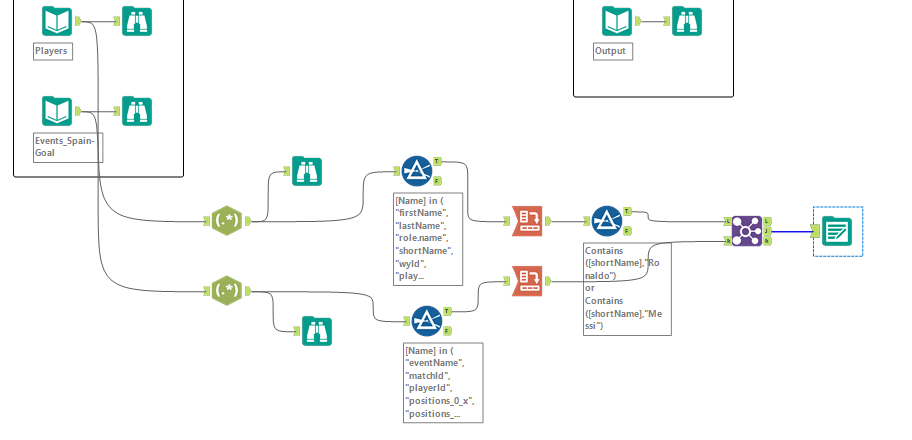
Stalled Disruption: How 'Messy' Workflows Are Protecting Human Jobs from AI
Artificial intelligence has shown remarkable progress in tackling tasks once thought beyond its reach, such as passing challenging graduate-level exams or writing at a professional standard. This remarkable capability raises a paradox: if AI can handle such complex work, why haven’t we seen it replace vast swaths of human jobs?
What This Article Covers
In the pages ahead, we’ll explore new research on how AI struggles with “messy” tasks, even as it excels at well-defined, linear workflows. We’ll also examine real-world cases of job displacement, discuss timelines for broader disruption, and outline practical strategies for adapting to an AI-driven future.

The AI Puzzle: High Capability, Low Disruption
Artificial intelligence tools—particularly large language models (LLMs)—have shown an ability to perform complex tasks that many experts once thought too intricate for automation. From passing law-school entrance exams to creating human-like essays, these breakthroughs showcase a remarkable capacity to mimic and sometimes exceed human performance in narrowly defined areas.
Yet, despite this wide-ranging proficiency, we don't see a massive wave of unemployment in roles that involve similar levels of cognitive complexity. This inconsistency highlights a fundamental question: if AI can tackle exams at an Ivy League level, why isn't it replacing more knowledge-intensive jobs more quickly?
Why the Disruption Slows
One reason for this seemingly slow disruption is that AI's current strengths often focus on structured, predictable tasks. While it can excel at providing well-formed answers to specific inquiries, it struggles with unstructured work that requires constant adaptation and real-time decision-making—a far cry from the orderly environments of standardized tests.
Moreover, “messy” responsibilities in many jobs involve context switching, ambiguity, and dynamic interaction with people. In these situations, AI’s lack of flexible reasoning becomes more obvious. Humans can rely on emotional intelligence, implicit knowledge, and reading social cues—skills that remain challenging for even the most advanced models.

Impact in Bangladesh: Who’s Really Affected?
Decreasing Jobs for Writers and Developers
Recent employment data shows an unexpected trend: rather than traditional office roles like travel agents or bookkeepers facing cuts, it’s writers and software developers who are feeling the impact. Industry insights indicate a drop in job numbers for these fields, deviating significantly from their normal growth patterns in recent years.
A key reason is that writing and coding can be divided into structured, separate tasks that AI can handle very effectively - whether it’s crafting product descriptions or fixing bugs in code. For freelancers or contractors in these areas, companies can easily substitute human effort with AI tools without major bureaucratic obstacles.
Why These Roles?
These jobs fit closely with AI’s main strengths—linear, goal-oriented tasks - allowing entire projects to be automated from beginning to end. A marketing firm needing quick content, or a startup looking for repetitive coding, might find immediate cost benefits by adopting AI-driven solutions.
Additionally, the high prevalence of freelancing in writing and coding worsens this trend. If a company can pay per project rather than provide a regular salary, replacing with AI is a relatively low-risk decision, encouraging a quicker transition compared to more permanent, full-time roles.

‘অগোছালো’ রক্ষাকারী শক্তি
আধুনিক এআই-এর অত্যাশ্চর্য সক্ষমতা সত্ত্বেও, এর অনেক সাফল্য নির্ভর করে পূর্বানুমানযোগ্য ইনপুট-আউটপুট সম্পর্কগুলির উপর। বাস্তবে, মানব কাজগুলো প্রায়ই অসংগঠিত ওয়ার্কফ্লো নিয়ে গঠিত হয় যা পরিবর্তনশীল প্রেক্ষাপট, অস্পষ্ট লক্ষ্য এবং অনির্দেশ্য মিথস্ক্রিয়ার দ্বারা চিহ্নিত।
একটি এলএলএম সহজেই একটি মেমো খসড়া করতে বা একটি স্ট্যান্ডার্ড প্রশ্নের জবাব দিতে পারে, কিন্তু এটি প্রায়ই বহুমুখী যুক্তিবোধের সাথে সংগ্রাম করে - দ্রুত আপডেটের সাথে তাল মিলিয়ে চলা, শেষ ব্যবহারকারীদের সাথে সহানুভূতি রাখা এবং চলার পথে বিচার করার সিদ্ধান্ত নেওয়া।
উদাহরণস্বরূপ, একটি নির্বাহী সহকারীকে বিভিন্ন সময় অঞ্চলে স্টেকহোল্ডারদের সাথে শেষ মুহূর্তের মিটিং তৈরি করতে হবে। এই চলমান অংশগুলিকে সমন্বয় করার জন্য অস্পষ্ট বা বিরোধপূর্ণ পছন্দগুলোকে ব্যাখ্যা করা, অপ্রত্যাশিত নির্ধারণী বিরোধ সমাধান করা এবং সূক্ষ্ম সামাজিক ইঙ্গিতগুলি পড়ার প্রয়োজন।
এই কাজগুলোর প্রতিটি এমন একটি অভিযোজনযোগ্যতার স্তরের দাবি করে যা অত্যাধুনিক এআই, এর সমস্ত প্রক্রিয়াকরণ ক্ষমতার জন্য, এখনও আয়ত্ত করা শিখছে। যতক্ষণ না মডেলগুলি এই বিশৃঙ্খল, মানব-কেন্দ্রিক সূক্ষ্মতাগুলির মধ্যে সফল হয়, ততক্ষণ মানব শ্রম চটপটে অগ্রাধিকারের কাজে প্রধান ভূমিকা পালন করে।
কেস স্টাডি উদাহরণ 1: স্বাস্থ্যসেবার প্রশাসনিক কাজ
একটি উদীয়মান এআই স্টার্টআপ একটি বৃহৎ স্বাস্থ্যসেবা নেটওয়ার্কে রোগীর অনুসন্ধান পরিচালনা করার জন্য একটি মডেল মোতায়েন করেছে। এই সিস্টেমটি বীমা কভারেজ এবং অ্যাপয়েন্টমেন্ট প্রাপ্যতা সম্পর্কে স্ক্রিপ্টেড উত্তর প্রদান করার ক্ষেত্রে চমৎকার ছিল - যতক্ষণ না রোগীরা প্রত্যাশিত প্রশ্ন থেকে বিচ্যুত হয়, লক্ষণ বা মানসিক উদ্বেগ সম্পর্কে ব্যক্তিগত বিবরণ যোগ করে। কারণ
এআই সহানুভূতিশীল সংলাপ পরিচালনা করতে বা আরও জটিল কেসগুলি শ্রেণীবদ্ধ করতে ডিজাইন করা হয়নি, কলগুলি প্রায়ই মানব এজেন্টদের কাছে ফেরত পাঠানো হত। এই ফলাফলটি দেখায় যে কীভাবে অসংগঠিত, দ্বিমুখী যোগাযোগ বাস্তব বিশ্বের প্রসঙ্গে এআই-এর বর্তমান সীমাবদ্ধতাগুলি প্রকাশ করে।
কেস স্টাডি উদাহরণ 2: আন্তঃবিভাগ সমন্বয়
এদিকে, একটি বহুজাতিক লজিস্টিকস ফার্ম আন্তঃবিভাগীয় শিপিং অনুরোধ পরিচালনার জন্য একটি চ্যাটবট পরীক্ষা করেছে। যদিও বটটি নিয়মিত শিপিং লেবেল তৈরি করতে এবং ডেলিভারি ট্র্যাক করতে পারত, সমস্যা দেখা দেয় যখন এটি অগ্রাধিকার পরিবর্তনগুলি নিয়ে আলোচনা করতে বা পৃথক দল থেকে শেষ মুহূর্তের আইনি নথিগুলি সংহত করতে হয়।
এই পরিস্থিতিতে, ম্যানেজারদের অস্পষ্ট লক্ষ্যগুলি স্পষ্ট করতে পদক্ষেপ নিতে হয়েছিল - যা এআই নিজে করতে পারেনি। পাইলটটি একটি হাইব্রিড ওয়ার্কফ্লো দিয়ে শেষ হয়েছিল: মানবরা সমস্ত অপ্রত্যাশিত উত্তোলন এবং কৌশলগত সিদ্ধান্তগুলি পরিচালনা করে, যখন বটটি স্থিতি ক্ষেত্রগুলিকে আপডেট করা এবং স্বয়ংক্রিয় নিশ্চিতকরণের ইমেলিংয়ের মতো সুস্পষ্ট কাজগুলি চালিয়ে যায়।

The Timeline: How Soon Before Wider Impact?
While current AI models may find unpredictable or multitasking scenarios challenging, they are advancing quickly. Recent strides in reinforcement learning and context-aware designs indicate a path that could soon broaden AI’s capabilities into tasks we once thought were safe.
As research facilities develop more versatile frameworks—capable of managing multiple goals and adapting swiftly—today’s hurdles might evolve into next-gen systems addressing a wider range of real-world difficulties.
Specialists warn that this advancement shouldn't be underestimated. Every iterative surge has historically outpaced expectations in speed and scope. From enhanced language understanding to superior decision-making, AI’s growth has a cumulative effect: the better it becomes, the quicker it hastens further advancements. Thus, roles once protected by complex workflows might soon encounter genuine challenges.
Historical Comparisons and Expert Predictions
Exploring previous waves of automation offers insight. When industrial machinery initially posed a threat to manual labor in the 19th and early 20th centuries, societies adjusted over decades, not years.
However, the digital revolution advanced significantly faster, disrupting sectors like manufacturing, customer service, and finance within a single generation. Many experts suggest AI could be similarly transformative—potentially altering white-collar jobs at a much faster rate than past changes.
At the same time, futurists remain split on the precise timing, with some expecting a gradual change and others foreseeing rapid shifts once specific technical thresholds are crossed.
In any scenario, enhanced collaboration among AI developers, economists, and policymakers will be crucial, ensuring society is prepared for—and actively shapes—the upcoming major transition in the job market.

Adapting to an AI-Driven Future
As AI advances into tasks once considered secure, the wisest approach for professionals is to develop complementary skills. Creativity, empathy, and domain expertise become particularly crucial, as these qualities still remain beyond the reach of most AI capabilities.
Identify Complementary Skill Sets
For instance, a marketing professional who can use AI to draft copy while incorporating personalized storytelling will continue to be in demand. Similarly, a project manager who can interpret unclear goals, manage stakeholder relationships, and integrate human inputs can leverage AI’s efficiency without being replaced by it.
Moreover, as generative models and machine learning systems evolve, new AI-related career opportunities arise. Positions like prompt engineering, model oversight, and ethical auditing emphasize the ongoing importance of human judgment in responsible and effective AI deployment.
Focus on Complex, Value-Added Roles
Instead of waiting for technology to advance, workers can proactively shift toward roles that demand holistic thinking, interpersonal communication, or strategic planning - areas where AI often lacks. For instance, employees who learn to analyze AI outputs with critical insight and tailor them for nuanced audiences provide significant value compared to those whose roles rely solely on linear tasks.
Likewise, organizational leaders must look beyond mere cost-cutting. Investing in upskilling teams, fostering an innovation culture, and actively tracking AI advancements can prevent a company from being taken by surprise. By establishing environments where human and AI collaboration is standard, businesses can adapt with the technology without facing major disruptions.

Generative AI’s remarkable ability to produce high-level work on demand has not yet triggered the massive job disruptions many feared. Instead, these new technologies show their greatest impact where tasks are linear and predictable, such as writing and coding.
Meanwhile, roles that revolve around unstructured, unpredictable workflows - coordinating multiple parties, handling nuanced conversations, and adapting to fluid requirements - still hold firm against the AI incursion.
However, as model architectures become more sophisticated, and as researchers refine techniques to help AI manage complex inputs, today’s safe havens may not remain so for long. The so-called “messiness” that protects these roles today could prove only a temporary shield against the advancing capabilities of machine intelligence.
Looking Ahead
Ultimately, adapting to AI means embracing a hybrid future. Workers and organizations that skillfully integrate AI tools into their workflows, while cultivating human-centric expertise such as empathy, creative thinking, and strategic judgment, will be best positioned for success.
Rather than an outright replacement, AI offers a collaborative partnership that can lift productivity - but only for those prepared to capitalize on its strengths while mitigating its weaknesses.